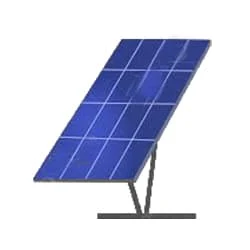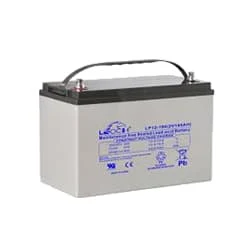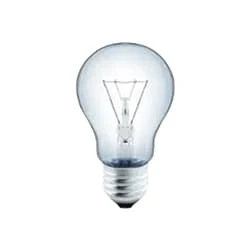Electrical Inverter house wiring:
This shows is diagram to make electrical inverter house wiring. Battery via inverter, connect the Inverter / UPS to the outgoing of main double pole (DP) MCB through a 3 Pin Power Plug and 3 Pin Power socket to the main supply.220v ac line to inverter / ups to the outgoing to main line control. Solar system wiring to electric bill save.
Diagram of Inverter house wiring:
Components Need for this Project:
You can get the components from any of the sites below:
- Solar Panel [See Buy Click Amazon]
- Solar Controller [See Buy Click Amazon]
- Battery [See Buy Click Amazon]
- Inverter [See Buy Click Amazon]
- DP MCB [See Buy Click Amazon]
- SP MCB [See Buy Click Amazon]
- Switch [See Buy Click Amazon]
- Socket [See Buy Click Amazon]
- Light [See Buy Click Amazon]
- Fan [See Buy Click Amazon]
Read Also:
Components used to make the house wiring:
01. Solar Panel
 |
| Fig 2: Solar Panel |
Photovoltaic solar panels can generate electricity directly from sunlight. Photovoltaic (PV) modules are connected assemblies of photovoltaic solar cells available in a package of various voltages and wattages, but not direct sunlight. And the sun also does not transmit electricity directly to the earth. Sends light and heat. It has to convert our electricity in different ways. We get heat energy from the sun very easily. Instead, it transmits light and heat.
02. Solar Controller
 |
| Fig 3: Solar Controller |
The function of a solar charge controller is to charge the battery by regulating the voltage and current coming from the solar. That is, reduce the voltage slightly so that the battery cell is not damaged due to high voltage. It's called a controller rather than a charger because it's so smart. Automatically provides proper power to the battery according to over voltage, over the current, short circuit, and battery temperature. There are two types of charge controllers. PWM and MPPT, PWM is relatively cheaper but has lower efficiency. On the other hand, good quality MPPTs are very efficient and offer maximum safety to the battery.
03. Battery
 |
| Fig 4: Battery |
A 12-volt Battery is an Irregular Battery used in Specific Electronic Applications. Of all the types of Batteries, the 12-Volt Battery is one That Looks Very Different Depending on its use. It can be Large or small, Heavy or Light. Twelve-volt batteries are commonly used in RV, Boat, and Other Automobiles Systems. From a Technical Perspective, a Battery Uses one or more cells to Allow a Chemical Reaction Creating the flow of Electrons in a Circuit.
04. Inverter
 |
| Fig 5: Inverter |
An inverter is an electrical device that converts DC current into alternating current (AC). AC can be operated at any voltage and frequency system with suitable transformers, switches, and control circuits. Most electrical appliances run on AC (Alternative Current). Nowadays inverter is a very common device that is used to change the voltage in any type of machine or to control the speed of the induction motor. For example, the power supply in our country is 50 Hz, and the speed of the motor will also be fixed at this fixed Hz. In such cases inverter is used to drive the motor slowly or strongly.
05. DP MCB
 |
| Fig 6: DP MCB |
Double pole MCB can control two wires. This circuit breaker is generally used in single-phase electric lines. Double pole MCB circuit breaker input has two wires supply two wires and an output. In a single-phase line, A double-pole MCB circuit breaker is used to give good production. This circuit breaker is provided through phase and neutral circuit breaker, it is very safe. This circuit breaker is preferred for home appliances. A DP MCB usually trips for 2 reasons 1. Overload 2. Short circuit.
06. SP MCB
 |
| Fig 7: SP MCB |
MCB SP means single pole it protects only one phase switching. MCB (Miniature Circuit Breaker) Curswitch is the most basic general-purpose switch that you use to control a light or another device from one location. These Switches Have Two Brass-Colored Screw Terminals Connected to the hot Power Source Wires. (MCB) For any Distribution Board, the Protection System Must be Used in The Incomer. Phase and Neutral Single Phase Supply to break. 120-volt circuits, 15-20 amp single pole breaker is typically used.
07. Switch
 |
| Fig 8: Switch |
A Single-Pole, Single-Throw (SPST) Switch. It's Got one Output and One Input. The Switch will Either be Closed or Completely Disconnected. SPSTs are Perfect for on-off Switching. They're also a Very Common Form of Momentary Switches. SPST Switches are Commonly Used in a Variety of Electrical Circuits and Applications, Such as Turning on And off Lights, Fans, and Other Appliances. They can Also be Used to Control the Flow of Electricity to Different Parts of a Circuit or to Switch Between Different Circuits Altogether.
08. Socket
 |
| Fig 9: Socket |
A socket is a type of equipment used in electrical wiring lines that always has an electrical connection. According to the need, it can be supplied to the electrical equipment. In case of electric iron, electric hand drill machine and electric hand grinder etc. two-pin socket with earth terminal is used. Also, three-pin sockets are used for electrical appliances that have a metal body and are likely to be electrified. Eg – Refrigerator, room heater, table heater, hot-plate, electric oven etc.
09. Light
 |
| Fig 10: Light |
CFLs work in a completely different way from ordinary lamps, they work by using a different process called fluorescence rather than generating light from heat. A typical light bulb wastes 90% of energy and converts only 10% of energy into light, this is where CFL has the biggest advantage. CFL- Curved or conical glass tube filled with argon and a small amount of mercury vapor. The inner wall of the glass is coated with fluorescent material. CFL- It is manufactured using the principle of creating fluorescent light. CFL- Originally white in color but now the construction and use of CFLs producing colored light has become popular.
10. Fan
 |
| Fig 11: Fan |
The main driving force behind all ceiling fan systems is the motor used inside the fan. We can also compare it with the soul of a fan. This motor converts the supplied electrical energy into mechanical energy which turns the ceiling fan and gives us air. When current is supplied, the magnetic field formed on the positive half-cycle becomes the reverse magnetic field on the next negative half-cycle. The magnitude part does not rotate and the capacitor is converted to a phase when it is connected to a phase motor or ceiling fan with a helical coil or stationing coil. When power is supplied there is a magnetic difference between the phase currents and the coils (acting as two phases) so that the motor or fan rotates.
Thank You for visiting the website. Keep visiting for more Updates.


Post a Comment
Do leave your comments